From Twic to Forma: Rebranding the world of benefits
So much of running an early-stage startup is making strategic trade-offs. What do we need to spend money on now? What will make the most impact and allow us to grow? During the sometimes uncertain early months or years of building a company, it’s common to delay investing a lot of capital in branding, especially if the product is still under development. But building a strong, well-crafted, compelling brand will eventually become something that directly impacts growth. A great brand builds trust and expresses your company’s ethos, ultimately driving critical functions like sales, recruiting, and product adoption.
One of our portfolio companies, Forma, recently went through a major brand evolution — transforming not just their design, but also changing their name. Forma is a life benefits platform that helps companies set up scalable, flexible benefits programs that employees can opt-into based on their unique needs.
We talked to Forma’s Co-founder and CTO Max Hsieh and Head of Design Jan Sundar about their experience with the rebrand, what it was like working with an external agency on the project, and about their ambitions for design in the future. Their answers have been lightly edited for length and clarity.
Tell us a little bit about Forma.
Max: Forma is a life benefits platform that helps companies provide benefits that flex to fit people’s lives. We help companies set up programs that can be scalable, and that can really fit into individual needs, whether or not your workforce is onsite, remote, global, domestic and regardless of company size.
What’s the story behind Forma’s original brand?
Max: When we started the company five and a half years ago we called it Twic. Back then my co-founder Jason and I were focused on trying to provide better wellbeing solutions to companies.
We were two guys with no marketing or design experience. I still remember being at a food court in San Francisco, discussing what we should name the company. That’s when we thought of “The Wellness Intelligence Company” and made an acronym out of it. The previous logo was made up of the letters twic all lowercase. At the time, there was zero design input because we weren't funded and pretty much paying out of pocket for everything. Jason was our first designer.
Why did you decide to rebrand?
Max: Over the last five years or so, the company has really evolved. Since our launch we’ve signed up companies like Block, Lululemon, Zoom, and New Balance and supported their employees in many different ways. We found that the use case was much broader than we initially thought. Companies were coming to us asking, ‘can we support our employees through childcare?’ and ‘can we help our employees improve their financial wellbeing?’
So we expanded our company's vision, becoming a one-stop shop for all things benefits. The name Twic no longer represented us. It also wasn’t a name people could talk about and easily remember, nor was it great for SEO. We decided that it was time for a change. It was time to create a name and a brand that was super memorable, that could truly represent the benefits category—like how we associate Airbnb with home sharing or Apple with consumer electronics. We wanted to establish a brand that was iconic and that people identified with benefits.
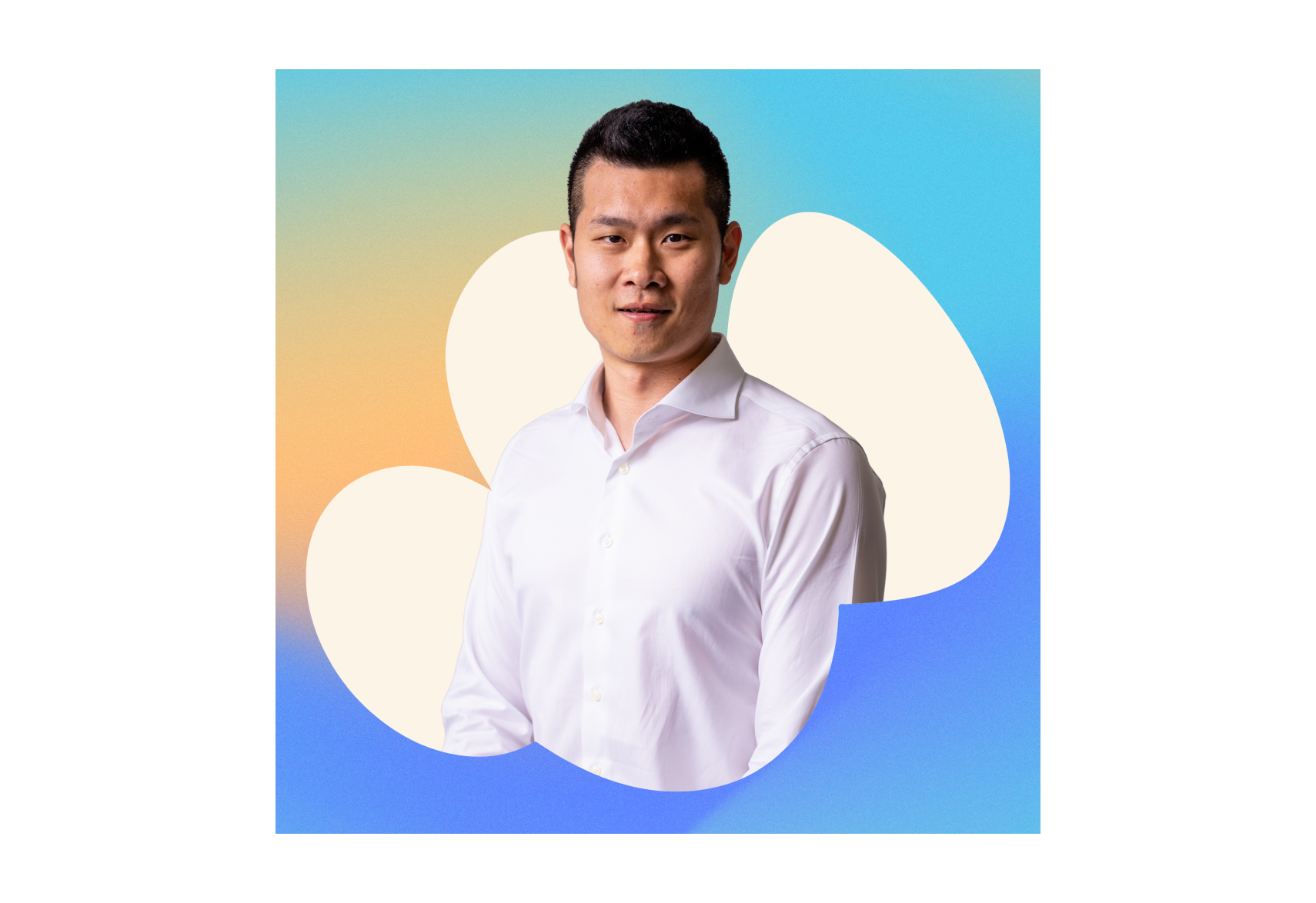
You need to have a clear understanding of what your company stands for, what you want to communicate to your audience, and how you want to be differentiated.Max Hsieh, Co-founder & CTO, Forma
How did you end up choosing Landscape as a design partner?
Max: Landscape was a Designer Fund referral. We’d been working with Ben and Enrique for the past few years and trusted their recommendations and guidance. They're the best in the design community! So when they recommended Landscape and found out that they worked on Stripe’s product logos, we knew that was saying something.
Looking for best practices on finding and partnering with the right design partner for your rebrand? Check out our Guide to Working with Design Freelancers and Creative Studios.
What was the rebrand process like? What were some of your key learnings?
Max: Landscape went through a few weeks of discovery, understanding what the benefits space is all about for themselves, and how our business might be positioned. They also did lots of competitive research on other companies in the same space. How do they represent their own brand? What do they talk about? What words and messaging do they use on their websites?
Hearing what our customers care about, how they view the space, and how they viewed Twic was super informative, and that process eventually drove us toward a few key design principles, positioning, and design strategy. I learned how important a rigorous design thinking and exploration process is. While finding the right firm who can guide you through the process is crucial, you also need to have a clear understanding of what your company stands for, what you want to communicate to your audience, and how you want to be differentiated.
Jan: I’m thankful to have been included in the rebrand process even before officially joining Forma as Head of Design. When I saw the initial explorations of the brand during an early interview with Max, I was truly inspired by the abstract expressionism and minimalism. As I read Landscape’s documentation, I felt they were extremely thorough in their market research and thought process. I still go back to that homework to this day and I'm like, okay, who are our competitors and how are we differentiating ourselves?
Sometimes the tone of a collaboration is set from the very first meeting. Jason and Max are warm, thoughtful, and open-minded entrepreneurs who very clearly appreciate how more inclusive services might better our world. So much so, that they went out and built it, without sacrificing their beliefs. This warmth colored our partnership and made navigating a complex industry a pleasure. We're very happy the work has been so well received.Adam Weiss, Founder & Executive Creative Director, Landscape
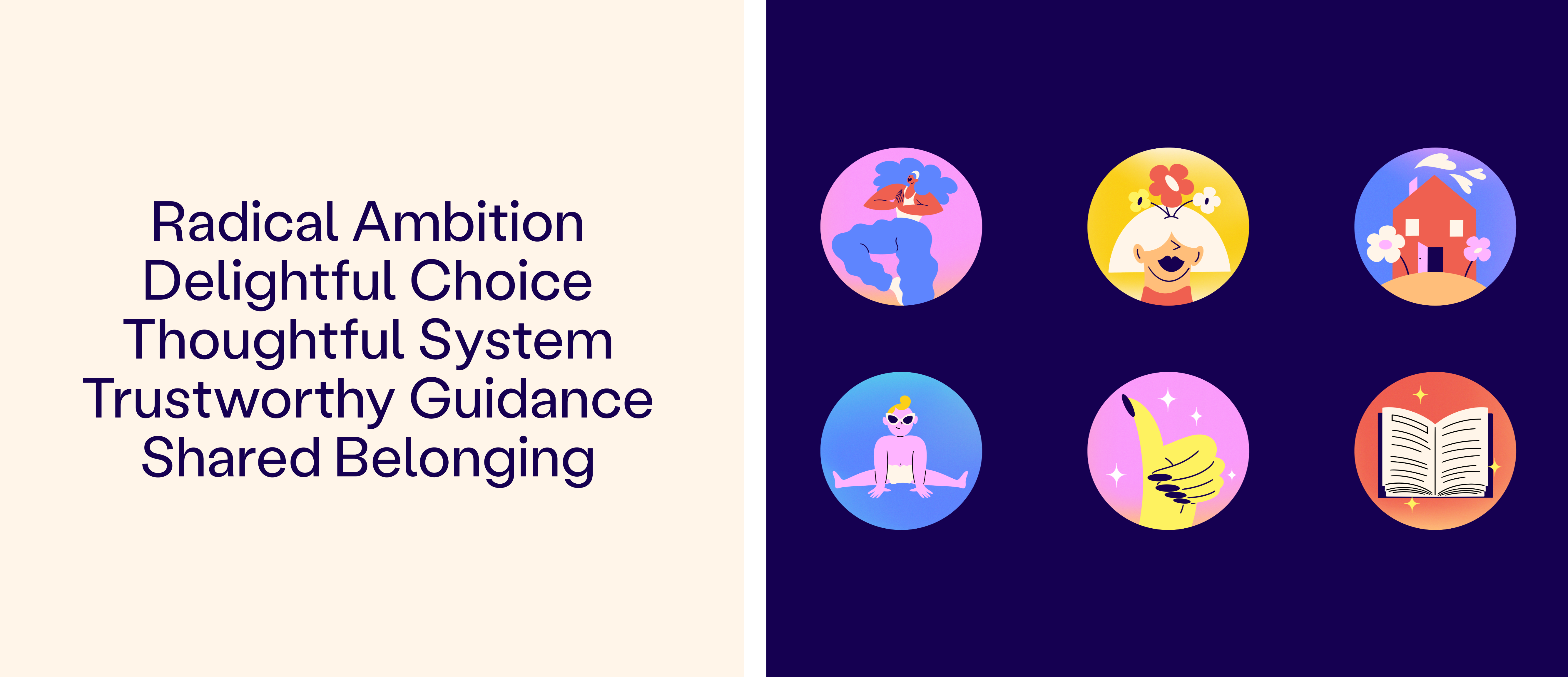
Why did you choose the name Forma?
Max: We had a group of people—including our marketing leader at the time, Jason, myself, our product leader, Daniel, and also our first designer Christine—involved in the naming process along with Landscape. When the name Forma was presented to us, it didn't click with me initially. But Christine, our designer, really made a push for it.
It eventually grew on us because we felt that there was a strong story we could tell behind the name. The name Forma, symbolizes form and shape, just like our lives all take different forms and shapes. Employee benefits need to cater to people's lives, and we're all a little bit different. We all have different experiences and challenges in our lives. Some people have kids, some people have pets, some people have parents they have to care for, some people have student loans that have to be paid off. We found there was a strong connection between the name and our business and looking back, that was probably one of the best choices that we've made.
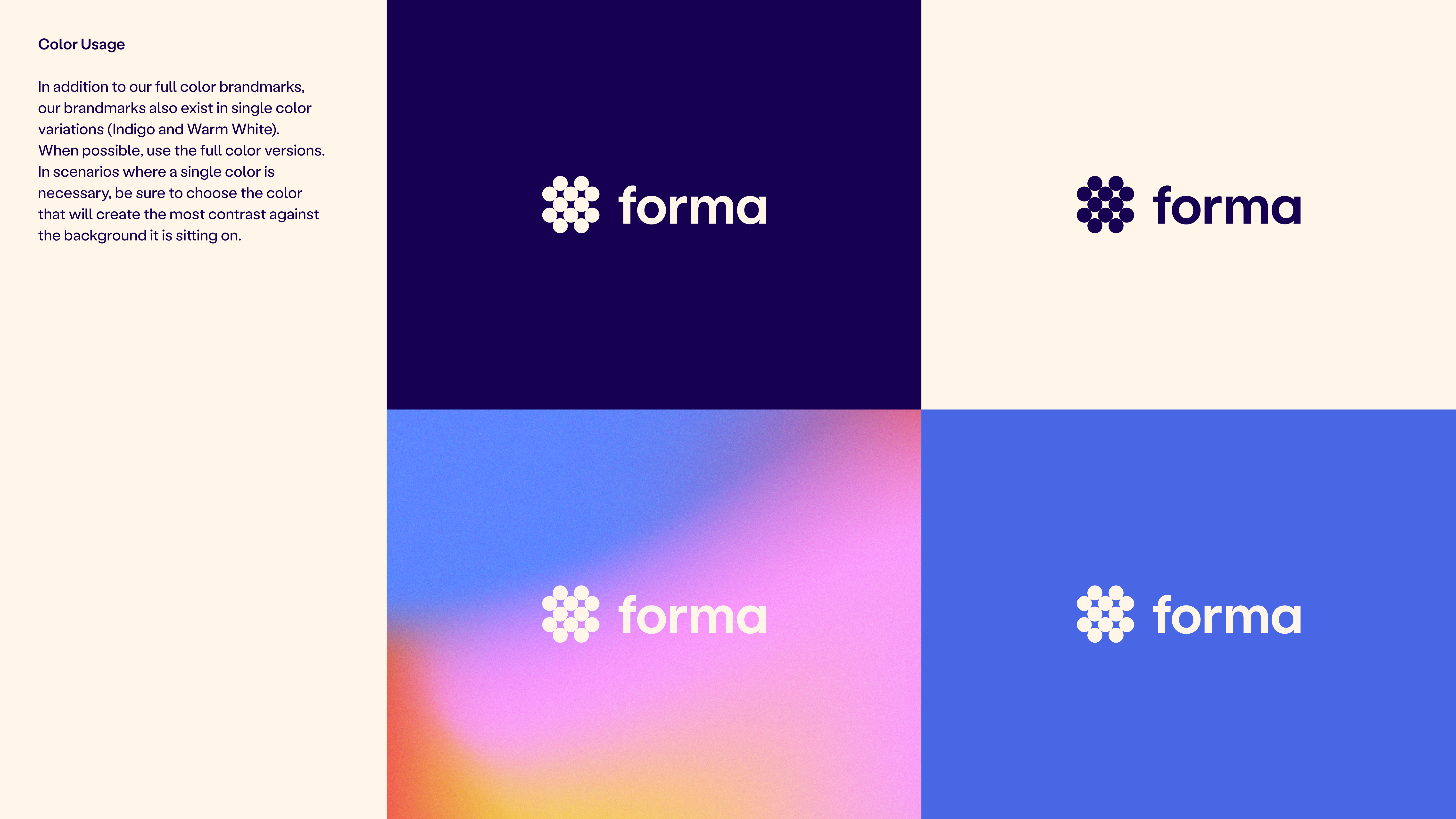
What was one of the biggest challenges behind the rebrand?
Max: We’re an HR and enterprise product selling to very traditional groups of people, like brokers and HR professionals. Like, how do you sell this to the HR team at Kroger? How do we balance that professionalism and seriousness with progressive thinking? That was the biggest point we were trying to balance.
Jan: If you look at the benefits market landscape, most of the products have a seriousness to them—because they have to show that they care about employees and that they take their information seriously. But customers also need to see how flexible the overall brand is. And that's what I really like about our brand. It feels like some of the images are dancing, emphasizing playfulness and joyfulness. The combination of the illustration, vibrant colors and typeface work really well. We've even been able to introduce these fun elements to something as serious as an ROI calculator.
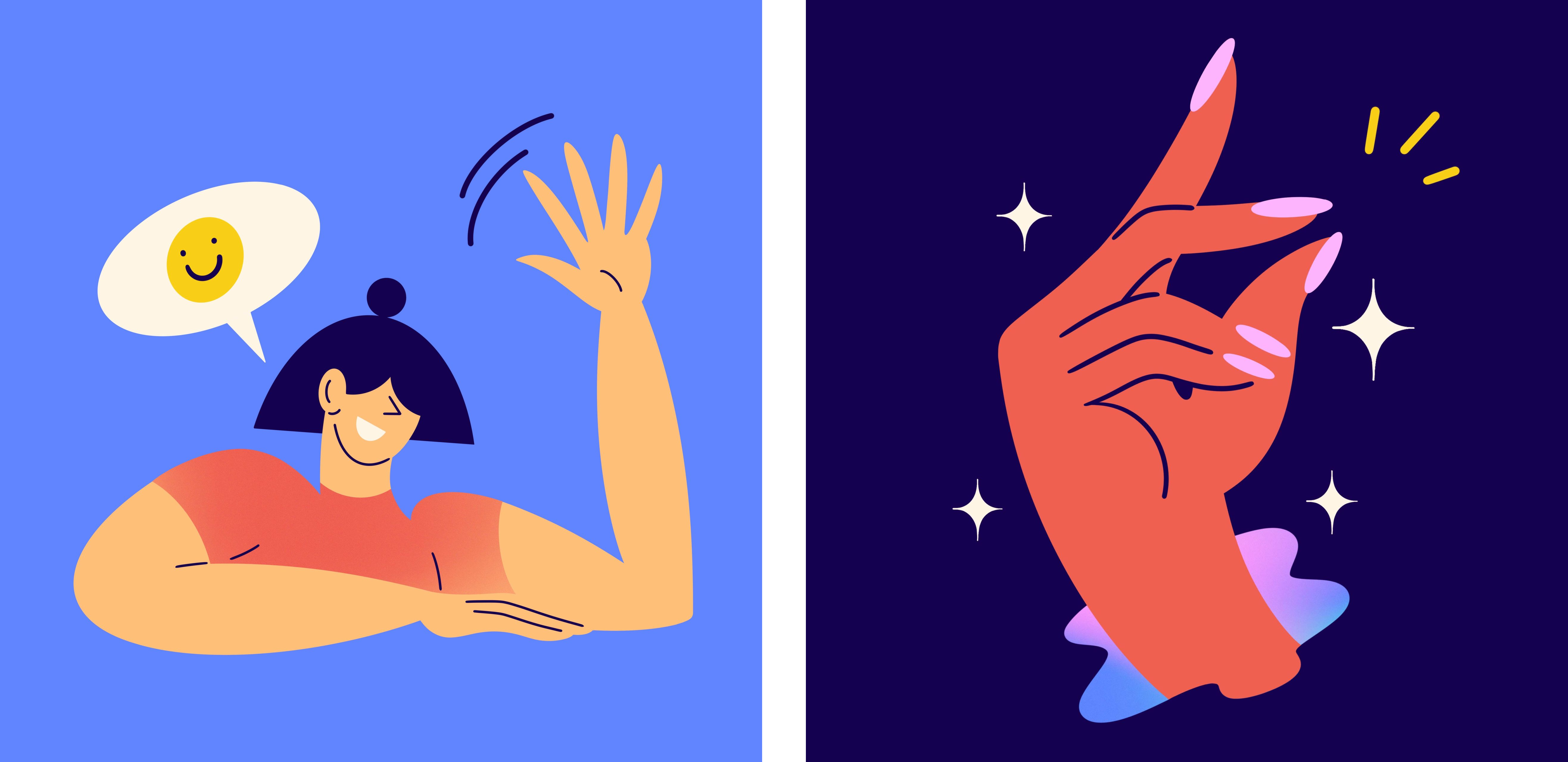
How did the new brand land? What were some of the initial reactions?
Max: We publicly announced the rebrand during the second week of March, and started with a pre-announcement to our customers two weeks prior. We were nervous at the time because we’d just onboarded Microsoft and sent out a bunch of communication to their employees about accessing Twic, so we weren’t sure how the new name and branding would resonate with them.
But it turned out that people loved the brand. Our contact at Stripe, one of our early customers, sent me an email that said omg Forma! with like 10 exclamation points. We had a company offsite in Cancun a few weeks ago, and our team was blown away by the work that our awesome art director had done in taking bits and pieces of our brand and transforming them in creative, high-quality ways. And I think that quality is really built based on a strong foundation—the colors, the contrast, and the typefaces. From the printed materials to the onboarding deck, it just feels very different from traditional HR platforms. The brand feels memorable and distinguishable.
Jan: We received comments from folks who came to our booth at the SHRM (Society for Human Resource Management) conference, saying that it not only stood out, but that it conveyed a sense of comfort and trust. We sent out a survey to attendees and many of the responses noted that the Forma brand felt unique, bold, and modern. Our art director, Kathryn Nolasco, is always thinking about producing and scaling amazing artifacts across all departments that help us stay consistent and true to our brand.
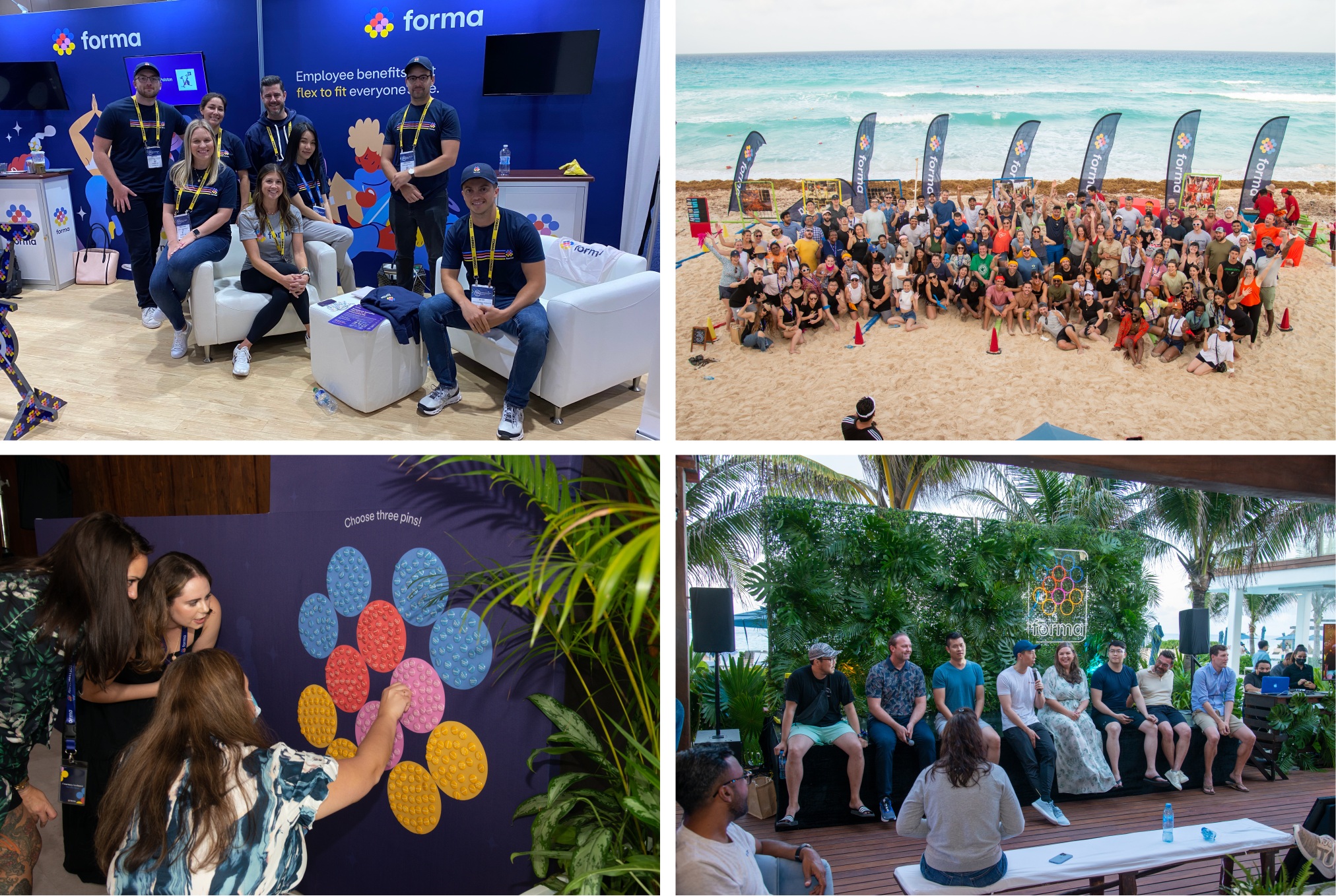
How do brand and product design integrate now, given the refreshed brand?
Jan: We’re starting to integrate the brand across the company by making sure our colors are consistent across both marketing and product. We’ve upgraded our typeface within the product, updated our account icons, and we're bringing in all the elements into our email communications.
I don’t want the product to be purely utilitarian. Ultimately, the goal is to have the product and brand be aligned all the way from outreach until the customer gets onboarded. And even after onboarding, we want to make sure that even small notifications on the app and email comms tell the same story. We’re on the right track of implementing some of these small elements first and then going bigger.
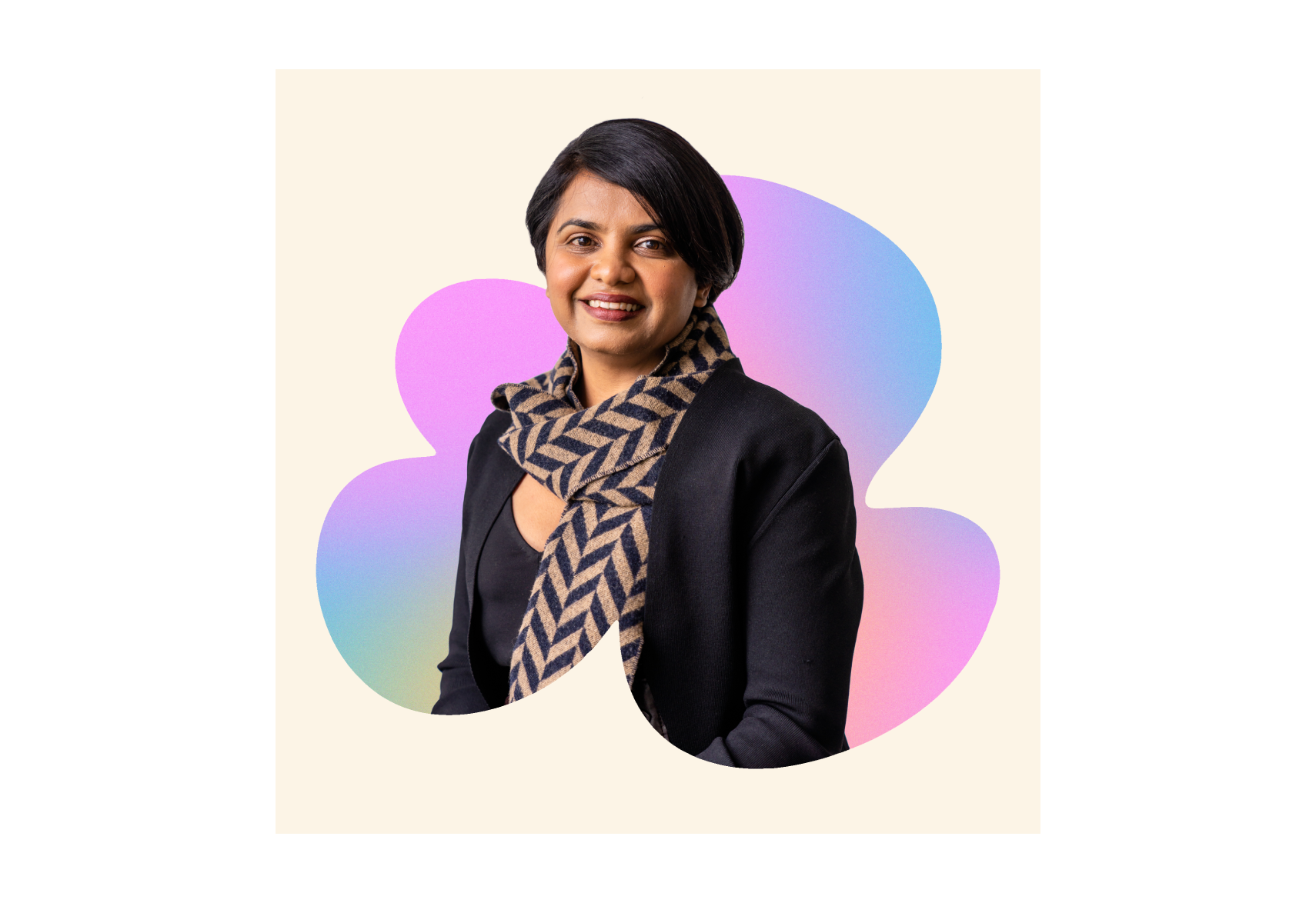
The first impression matters a lot: Can I trust this company? Can I trust Forma to take care of everything? Once a customer has that trust, they then purchase the licenses, use the product, and provide feedback. Brand is very important for us in enabling that.Jan Sundar, Head of Design, Forma
I want to thank Christine Daley, our founding product designer, who took the opportunity to work closely with the Landscape team and Forma’s leadership team to bring the brand alive and introduce it within product and engineering. It’s a time-consuming and stressful process but she did it with such grace and humility. I’m excited to grow the brand alongside the rest of the design team.
What's ahead for design at Forma?
Jan: Next year, we want to redesign our mobile experience. With mobile, we can do so much more with personalization, contextual guidance, and education. We want to grow our amazing brand and visual language and build them into our mobile apps as well.
Max: We initially focused the energy on scaling the brand, supporting go-to-market like sales, presentations, conference booth, and printed materials. We wanted to leave an impression on prospects and customers, letting them know that this is the same company with a stronger brand and identity. I would love to see us allocate some of that effort and the energy into making sure that we scale the brand into the product and elevate the product quality.
✍️ Key Takeaways
- Businesses evolve over time. Articulate your company’s current mission and make sure your brand aligns with that.
- Do your homework. Take the time to deeply understand your market, competitors, and benefits to zero in on your brand positioning. Don't rush this process.
- Don't be afraid to bring some joy and humanness into your brand, but aim to strike an appropriate balance between trustworthiness and playfulness—especially in a historically "traditional" industry.
- Ensure a consistent user experience by embedding brand into every touchpoint across product and marketing.
- “Another key learning was not to get attached to names too quickly," notes Forma's Max Hsieh. "There are many reasons why a seemingly sound name may not work out, like failing to pass trademark review. Our business happens to extend across many categories.”
⚡ Forma is seeking a Product Designer!
Forma is looking for a product designer who prioritizes craft, accessibility, delight, and quality. Join a tight-knit, collaborative design team that cares deeply about creating delightful and intuitive life benefits experiences for customers and members. You'll help bring hundreds of thousands of our members' peace of mind and joy by curating inclusive benefits programs.